'As You Wish' at Guilder
Caryn and Mike Nelson are serving more than just their Junior’s Roasted Coffee, and seasonal dishes, at NE Portland’s Guilder. Together with their staff, the couple has created a space that organically asks customers to consider what goes into creating their cup of coffee beyond the everyday ordering/brewing/drinking process. Focusing on production costs, and the social impact of coffee consumption, the Nelsons have aligned with fellow roasters and coffee professionals to motivate anyone participating in the world of coffee to reflect on the environmental, economic, and social impacts of their choices. We chatted with Mike about how all of this came to fruition, The Princess Bride, and how he likes to drink his morning coffee.

Can you tell us how Junior’s, then Guilder, came to be?
Junior's Roasted Coffee started in Tallahassee, Florida in August 2014. Caryn and I moved to Tallahassee from New York after I was accepted into a doctoral program at Florida State University's (FSU) Geography department. We started a coffee roasting business in order to dig into the community and meet people. We knew very little about Tallahassee, and had little to no contacts outside of the university. While walking around Prospect Park in Brooklyn after having accepted the position, we started brainstorming business names. We saw the business as our shared project and, since we had no plans for having kids, our offspring of sorts. It was even more fitting that the roaster we were going to be roasting on was a tiny 1.5kg roaster, which we named Junior.

Junior's served the community for two years before I mastered out of the program and we moved back to where I call home, Portland, Oregon. Academic life was rewarding in so many ways, yet was draining in others. There were lots of factors leading to the move, and we thought that moving to Portland to grow Junior's was the healthier choice. While preparing for the cross country move we started looking for spaces to roast for wholesale. We found a location in North Portland to house a roaster, but after seven months of back and forth, the space fell through. Right after that space fell through someone told us about a new opening in the Alameda-Irvington neighborhood in northeast. The space was much larger than what we were looking at before, and it had a kitchen! This opened up the possibility of using it for retail. Initially, we had no interest in starting a cafe, but the building and location made it hard to resist. We knew we'd have to name the cafe something else because we didn't want to create any confusion with Junior's Cafe, a preexisting Portland restaurant. As we were signing the lease, the building owners made some reference to the Princess Bride. I told them that Caryn and I played that movie at our wedding reception. Coincidentally, they played it at theirs as well. We laughed and started throwing out references to the movie. Our business partner threw out 'Guilder', and it stuck. So Guilder is essentially a Junior's Roasted Coffee cafe.


Your academic research focused on climate change’s effect on coffee farming. How does the impact of coffee consumption on the environment factor into how you buy and roast coffee, and how you educate your staff and customers?
Admittedly it's not as much environmental impact as social impact. While we ask producer partners about fertilizer use, pesticide use, fungicide use, and water treatment, my research informed our buying practices at the social/political/economic level. We absolutely educate staff about environmental pollution and climate change in initial trainings, but the Cost of Production Covered Project revolves around globalization and the inherent political economics of coffee production. We're hoping that the project takeaway involves deeper reflection about other goods we consume and the consequences (environmental, economic, social) of this consumption.

How did the “Ask Me About Cost of Production” initiative come to be? How do concerns and focus on cost of production factor into your business practices at Junior’s and Guilder?
The project started after a serendipitous Skype call with Chad Trewick (who was working on the Specialty Coffee Association's board of directors and served as the board's liaison to the Sustainability Council). In an attempt to gather empirical data, I wanted to look into how coffee leaf rust was impacting coffee production costs. A mutual friend put Chad and I in touch, and Chad, who had done an inspirational amount of work on cost of production, shared his brain with me. I began to shift my research direction and started to focus on production costs as quantitative metrics. When leaving Florida State University and academia, I didn't want to lose my research, so I thought that the research could help inform the way we ran our business. We figured that a farm's cost of production would not only factor into our contracts but that it would serve as the price floor for price negotiations. The importer's premium (i.e., specifications around size, etc., quality) and our premium (i.e., a premium based on farm reinvestment and profitability) would then be added to the cost of production. After diving into cost of production we realized how unavoidable it was to take a critical look into our own costs of doing business. Recently, we started exploring the concept of open-book management and even held a training with staff around financial literacy. The project has made transparency our goal, beacon, rallying cry, and backbone of both Junior's and Guilder.

You recently joined several other coffee-buying colleagues in The Pledge for transparency in coffee pricing. What does participating in this pledge mean to you?
We see the pledge as supplemental to the work we've been doing with cost of production. Our Cost of Production Covered Project shares farm gate price (i.e., the price received by the coffee producer) as well as free on board (FOB). While we see the limitations associated with relying solely on FOB prices as a metric for sustainable and transparent coffee pricing, we believe that pricing transparency in any measure is a step in the right direction. As a small roaster in a sea of larger roasters, we would like to align ourselves with other transparency minded folks. It can be hard to get messages out there as a small company, but if we form alliances with many other small folks, or larger companies, we can get a message across faster and at a bigger scale.


How do you share your concerns for cost of production, and transparency in the coffee industry, with your customers on a daily basis?
We take several different approaches to sharing the project with customers. We are aware of the fleeting moments one has to make a connection during a transaction, and are aware of the fact that not everyone learns the same way. Therefore, we communicate the message in several forms. We use the coffee bag labels themselves to share C price, the farm cost of production, and our farm gate price. We also use shelf labels to help catch customers’ attention. Last harvest we worked with a comic book artist to illustrate a comic book that details our Cost of Production Covered Project. The comic is only six pages long, and can be easily read while someone is waiting in line at the café. We are about to publish the comic translated into Spanish. Our actual print menus have a section dedicated to explaining the cost of production project as well. The menu mentions that the C price is posted in the café. Next to our front door we list the daily C price, which has prompted even more questions than our wifi password! Our wifi password was changed to “askmeaboutcostofproduction”, which is also the title of the comic book. During the month of July 2019 we put together an art show revolving around cost of production. Along the upstairs west wall was a piece that illustrated the C market fluctuations from 1976 to present day, providing a key with different product references (e.g., prices of Guatemalan bread in 1976 vs. today, and for a truck in Guatemala in 1976 vs. today) for context. We hold public events often, and always try and implement learning strategies that focus on the co-production of ideas, such as group discussion and reflection. Every day we are brainstorming new strategies to make the idea stick; new ways to plant the idea in our customers’ own backyards.


What does the future of the coffee industry, and coffee consumption, look like to you?
I'm an optimistic person. At the same time, I'm driven and motivated by my dissatisfaction with how long it has taken the industry to come to its most recent realization that there is a problem. There are indeed folks that have been working on transparent pricing efforts, but I believe that outside of that minority is a majority that has willingly turned a blind eye to inequitable trade dynamics for the sake of profit. I think that the industry is starting another cycle of deep reflection of pricing transparency, and I think that roasters of all scales can and should be a part of that. I would like to see the industry focusing on sourcing transparency, furthermore, I'd like to see the industry directly engage coffee drinkers about consumerism. As the demand of specialty coffee goes up and supply goes down (i.e., more farmers abandoning farming, growing conditions getting worse due to climate change), I think that we're going to start seeing more lower scoring coffees, and they're going to be getting more expensive. I think that at this point some of the larger, more commercial brands will have to take accountability and share the reality with consumers. I think the future conditions will make consumer awareness and reflection about consumption in general inevitable.

When you’re not roasting coffee, or promoting education within the coffee industry, how do you like to spend your days?
That's a good question. We've put in so much time into the business over the last two and a half years, and we're just now getting to the point where we can take a regular day off. I'm trying to catch up with friends and spend time with family, getting a tattoo now and then, and sporadically skateboarding. It's usually the case that Caryn and I combine work with any sort of travel.


What is your favorite way to brew and drink coffee? Do you have an everyday coffee ritual?
My favorite way to brew and drink coffee is on a batch brewer or via pour-over. Filter coffee for life. The first thing I do when I walk into the cafe is pour myself about 5oz of batch brew and then head over to the roaster. That's my coffee ritual.
Over the last few years of running the cafe, I haven't been making coffee at home much. I'm determined to believe that my burr grinder and water isn't good enough despite using the same brew ratio, time, and technique that I do in the cafe. It's all in my head.
Instagram: guidler_pdx and juniorsroastedcoffee
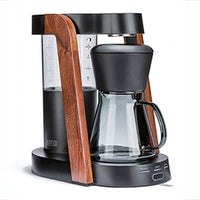 Ratio Eight S2
Ratio Eight S2
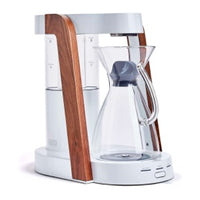 Ratio Eight Original
Ratio Eight Original
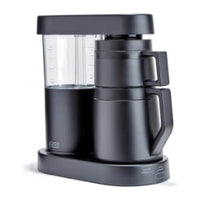 Ratio Six
Ratio Six
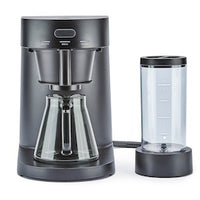 Ratio Four
Ratio Four
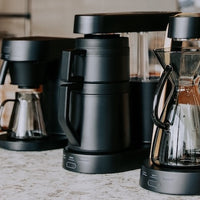 Compare Machines
Compare Machines






